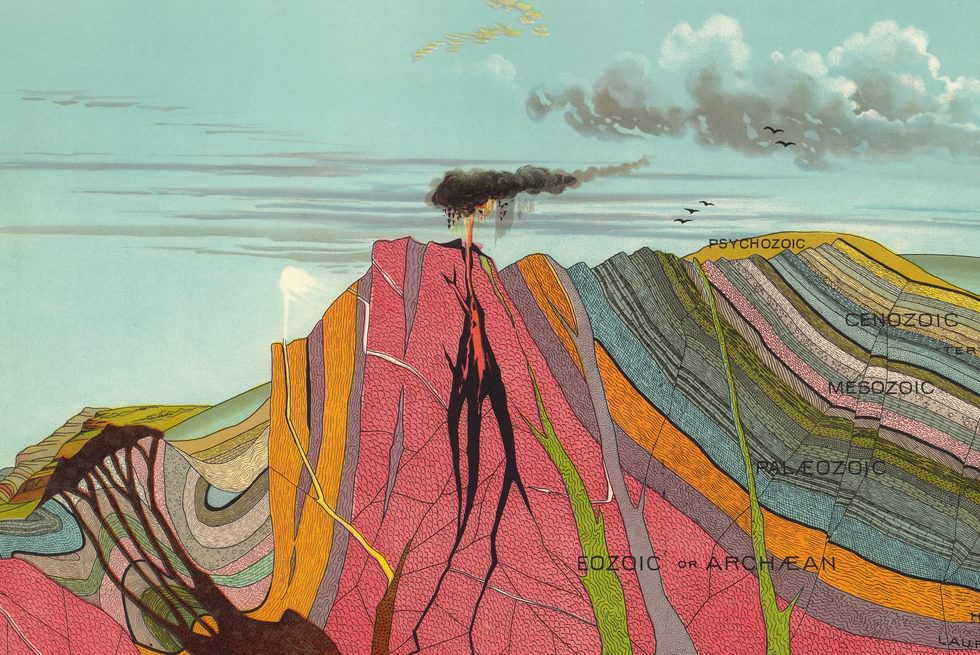Erosion
From the Series: Geological Anthropology
From the Series: Geological Anthropology

Waves breaking, rocks pounded into particles, sands suspended, soils liquified. Is erosion ever a good thing? This is the crude but unassuming question that guides the investigations of many coastal engineers I have come to know in Guyana. For them, part of the difficulty of answering this question is that protecting the shoreline comes with a cost. There is the literal cost of constructing elaborate fortresses of groynes that jettison out into the Atlantic Ocean in a stern attempt to consolidate sediment. In professional lingo engineers call this “holding the line,” as if to suggest that halting erosion occurs when there is enough human intention to sabotage movement. Since the colonial Dutch and British eras, holding the line has put engineers in the position to plan for plantation agriculture and now, even, offshore oil exploration. And yet, they do not treat these market interventions as remarkable or even as end goals in and of themselves, but rather as factors causing the erosion unfolding along the coast.
They admit, in other words, that holding the line creates new opportunities for settlement, exploitation, survival, and ingenuity, which are often times hard to disentangle from one another. In the starkest of terms these new opportunities infringe on the ecologies of mangrove forests and the migration of mudbanks throughout the Guiana region of South America. In response, engineers supplement groyne constructions with tree replanting and protective watersheds. In these instances, engineers recognize that while “hard” structures such as a seawall or an oil rig may disrupt an erosion cycle, they can also turn to seedlings, saplings, and even snags (dead trees) to manage its disruption. The point perhaps is not that groynes can and often do fail engineers, but that through such failures some life forms, intellectual ideas, and political tales withstand the tide while others do not. Erosion is as an entry point into natural history, or in Hugh Raffles’s (2002) phrasing, it helps humans narrate a place’s past in the present.
Erosion has histories just as waves do, the other prominent characters in the climatic imaginaries of coastal engineering (Helmreich 2014). But if one were to skim the pages of popular scientific journalism or social science literature, erosion would appear to always have a predetermined outcome. On this point, the field of political ecology has long offered detailed analyses of human activities that shape land degradation over time (Blaikie and Brookfield 2015). But the provocations of engineers in Guyana suggest something else: the geological character of erosion is defined by movement and less so the permanency of strata. Sea defenses, for instance, have been touted by the Guyanese government as essential for the country to transition into a “low carbon economy” that will combat both rising tides and shifts in global energy markets. Within this broader framing of sea defense, climatic vulnerability unfolds alongside engineers’ attempts to reimagine how people might live with (rather than against) erosion. Thus, engineers’ activities adapting, retrofitting, and rebuilding sea defenses enact a critical stance toward narrating history as progressive or linear. By critical stance I do not simply mean self-reflexivity, or that engineers spend their days fretting about the limits of infrastructural design in a world filled with risk. They also recognize the competing and erratic ways erosion makes space for the global story of climate change across time.
In short, engineers do the work to narrate nonlinear histories about the intersecting public “goods” and “bads” of erosion. Such histories circulate to offer conclusions that satisfy more than politicized visions of apocalypticism, crisis, suffering, or grief. Engineers have the time and patience to do such history-telling, though they are not alone. And, just to be clear, engineers do not only experience climatic vulnerability through scientific abstraction (e.g., diagrams and models) but through their relationships to environments, institutions, and technologies. Engineers are thus part of a knowledge network that treats the materiality of erosion as inseparable from the differentiated ways in which people live with climatic vulnerability. I would certainly count others in Guyana—including farmers, fisherfolk, squatters, lawyers, apiarists, military and police, tourism workers, professionals in the energy industry, and botanists—as helping engineers narrate nonlinear histories of erosion.
Identifying these narrators and their competing interests, I am arguing, is essential to critical studies of climate change. They give ethnographic and theoretical specificity to what Amitav Ghosh (2017, 85) calls the “counterintuitive” historical relations of capital and empire that contribute to a global carbon economy in the present. As Ghosh (2017, 114) remarks, “While there can be no doubt that the climate crisis was brought on by the way in which the carbon economy evolved in the West, it is also true that the matter might have taken many different turns. The climate crisis cannot therefore be thought of as a problem created by an utterly distant ‘Other.’” In nations such as Guyana that are cautiously optimistic and late to the petroleum game but whose experiences of climatic sea-level rise seem relentless, who counts as the “Other” is not easy to define.
Engineers, then, work against climate change, but they are also in some ways its accomplice. In Guyana, sea defenses create the possibilities for imagining a more livable coast while engineers account for what might have gone wrong with “development” in the past. Erosion provides a lens on the human production of natural history, and forms an expression of how people continue to change the climate, and remain caught up in the planet’s future, even long after they are dead.
Blaikie, Piers and Harold Brookfield. 2015. Land Degradation and Society. New York: Routledge.
Ghosh, Amitav. 2017. The Great Derangement: Climate Change and the Unthinkable. Chicago: University of Chicago Press.
Helmreich, Stefan. 2014. “Waves: An Anthropology of Scientific Things.” HAU: Journal of Ethnographic Theory 4, no. 3: 265–84.
Raffles, Hugh. 2002. In Amazonia: A Natural History. Princeton, N.J.: Princeton University Press.